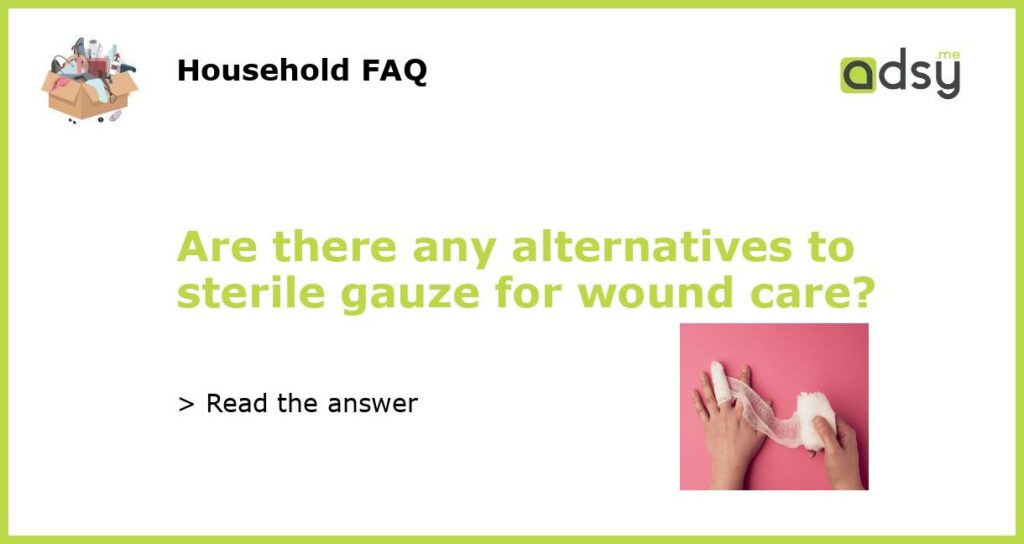Alternatives to Sterile Gauze for Wound Care
When it comes to wound care, sterile gauze has long been the go-to option. However, in recent years, healthcare professionals and researchers have been exploring alternative materials and methods for wound healing. In this article, we will explore some of the alternatives to sterile gauze for wound care.
Hydrocolloid Dressings
Hydrocolloid dressings are a popular alternative to sterile gauze for wound care. These dressings are made of a gel-like substance that keeps the wound moist and promotes healing. They create a barrier over the wound, preventing external contaminants from entering and reducing the risk of infection. Hydrocolloid dressings are also breathable and can be left in place for several days, reducing the frequency of dressing changes.
Foam Dressings
Foam dressings are another effective alternative to sterile gauze. These dressings are made of a soft, absorbent material that helps to manage wound drainage. Foam dressings are available in different thicknesses and can be used for both shallow and deep wounds. They provide cushioning and promote a moist environment, which is essential for wound healing. Foam dressings also conform well to the wound bed, reducing the chances of leakage or maceration.
Alginate Dressings
Alginate dressings are derived from seaweed and are highly absorbent. They are particularly effective in managing wounds with heavy exudate or those that have trouble healing. Alginate dressings form a gel-like substance when they come into contact with wound fluid, helping to maintain a moist environment. These dressings can be used on both infected and non-infected wounds and are available in different forms, such as sheets, ropes, or ribbons.
Hydrogel Dressings
Hydrogel dressings are another popular alternative to sterile gauze. These dressings are made of water or glycerin-based gels and are particularly effective for dry or necrotic wounds. Hydrogel dressings provide moisture to the wound, helping to rehydrate and facilitate healing. They are non-adhesive and easy to remove, making them suitable for sensitive or fragile skin. Hydrogel dressings are available in sheet or gel form and can be used on both infected and non-infected wounds.
Negative Pressure Wound Therapy
Negative Pressure Wound Therapy (NPWT) is a more advanced alternative to traditional wound care methods. This therapy involves applying negative pressure to the wound bed using a specialized dressing and vacuum system. NPWT promotes wound healing by removing excess fluid, reducing swelling, increasing blood flow, and promoting the formation of granulation tissue. This alternative is often used for complex or chronic wounds that have not responded well to other treatments.
In conclusion, while sterile gauze has long been the standard for wound care, there are several alternatives available that offer unique advantages. Hydrocolloid dressings, foam dressings, alginate dressings, hydrogel dressings, and negative pressure wound therapy are all effective alternatives that can promote wound healing and provide better outcomes for patients. Healthcare professionals should consider these options based on the specific needs of the patient and the characteristics of the wound. It is essential to stay updated on the latest developments and options in wound care to ensure the best possible outcomes for patients.






